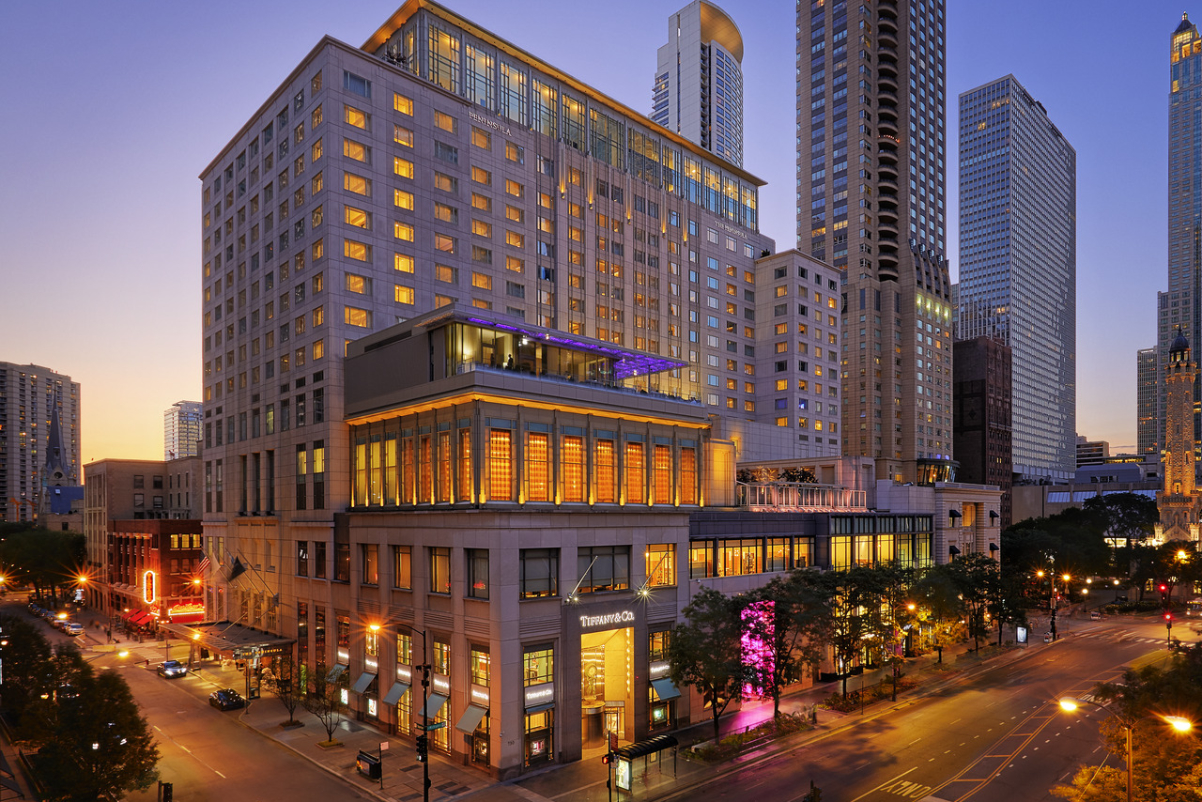Ultra-Luxury Hotels Bet on Measured Growth

Skift Take

Early Check-In
Editor’s Note: Skift Senior Hospitality Editor Sean O’Neill brings readers exclusive reporting and insights into hotel deals and development, and how those trends are making an impact across the travel industry.I can't imagine ever tiring of infinity pools, Michelin-starred restaurants, and staff answering my every whim. But from a business perspective, it seems you truly can get too much of a good thing in ultra-luxury hotels and resorts.
In the ultra-luxury segment — think names like Aman, Four Seasons, 1Hotel, One&Only, Park Hyatt, Peninsula, Raffles, The Ritz-Carlton, and Six Senses — it can be a mistake to grow a brand's footprint too fast or widely. After all, luxury is partly about scarcity.
At least, that's the idea that hotel industry leaders have voiced in recent months.
- Bulgari Hotels & Resorts has modest plans. “We want maybe 15 hotels maximum down the road,” said Silvio Ursini, the group executive vice president of the hotels and resorts division of the Italian jeweler, in an interview with me this month.
- Four Seasons has arrived at 126 luxury hotels and resorts and 53 branded residences over six decades. Marc Speichert, the chief commercial officer, said earlier this year that the brand is averaging 5 to 7 openings per year. While that may seem like a lot, there are probably still fewer Four Seasons than offices of Accenture, a consultancy.
- 1Hotels will grow as a brand to about 30 to 50 properties, predicted Raul Leal, CEO of parent company SH Hotels & Resorts, in an interview with me this year.
- One&Only's parent company, Kerzner Hospitality, is led by CEO Philippe Zuber, who recently said he might cap the growth of the luxury brand at about 35 locations.
Piers Schmidt knows luxury and hotels. I got to chat with him last month in London at a reception during Skift's Future of Lodging event. He's been a busy person.
- Schmidt is on the group advisory board of Red Sea Global, Saudi's development effort of world-historical ambition.
- His advisory firm Luxury Branding has guided companies for a couple of decades. Recent clients include Celebrity Cruises, Saudi's Boutique Group, Mauritian hotel group Sun Resorts, and Maldivian resort group Villa Resorts.
- He's also co-founder of Kingham Leigh, which gets hands-on in shaping luxury hospitality concepts.
Schmidt and I began wondering what's the magic, or optimal, number of properties for an ultra-luxury brand. Weeks later, I interviewed him for his considered view.
- STR, the gold standard for hotel benchmarking, categorizes about 140 brands worldwide as "luxury."
- Schmidt considers about 36 of these brands to be truly ultra-luxury. The smallest brand is either LVMH's Cheval Blanc, with five hotels, or Ferragamo's Lungarno Collection, which has a half dozen properties, depending on your view. The largest are The Ritz-Carlton and Four Seasons.
- "If you divide the total number of branded properties by the 36 figure, then the average number of hotels in ultra-luxury brands is just 25," Schmidt said.
- "That tells you something," Schmidt said. "Either it's not desirable to go much further and faster than that, or it's not easy to do so or possible. There's a ceiling of maturation."
- "It's interesting how a few leaders are now going to the market and saying they're not going to pursue aggressive growth," Schmidt said. "It's about time. We've seen this reckless pursuit of growth by many hotel chains. So maybe there is a growing recognition that that isn't possible or desirable in the ultra-luxury segment."
Sadly the rising recognition of growth limits may reflect more of an increasing market resistance rather than thoughtful brand management.
- "If you're developing a property that costs $2 million a key, there are very few places where you can get the $2,000 a night demand to justify and support that," Schmidt said. "There are also few owners and developers with the wherewithal to execute."
- "You have 36 ultra-luxury brands pitching to [this elite group of] owners saying they can make it work," Schmidt said. "Realistically, once an owner has six or ten years of hard experience, they want to limit their risk. I have a suspicion it's more about those hard realities than savvy luxury brand management that explains the new caution and wisdom."
- Schmidt recounted as an example the 2015 tale of when Roeland Vos moved from being president of Starwood Hotels & Resorts Europe, Africa, and the Middle East to become the CEO of Belmond — a set of about 25 hotels and 20 trains and other luxury experiences accumulated across four decades. Vos said on a 2017 earnings call that he planned to double the portfolio within a few years. Of course, that never happened — and would its owner, the luxury powerhouse LVMH, even want it to?
Another problem for ultra-luxury hotels is that the global hotel groups have an obsession with growth, driven by equity investors.
- "The acquisition price that Marriott pays for The Ritz-Carlton brand or IHG pays for Six Senses or an Accor buying Raffles is predicated mainly on future growth in development rather than extracting more profit out of existing properties," Schmidt says. Development pressure can cause brands to accept deals they shouldn't. Internal bonuses and incentive structures may reward reckless growth.
- "I can imagine someone saying, 'We have an owner we've worked with before who wants to get into ultra-luxury, and they've come to us with a property, so let's make it work. You guys are just about service and programming, so take it on.'"
- "But an ultra-luxury property needs to be in a certain location within a certain location with a certain demand profile and amenity set," Schmidt said.
- Schmidt credits Hyatt for a rare success in creating and scaling up the Park Hyatt brand. He said Park Hyatt is one of the rare examples where a major hotel group has successfully developed an upward extension — a ’supra brand’ — from its main line that’s earned an ultra-luxury cachet.
Why do luxury properties often decline in average quality when their systems expand?
- Schmidt cited tales of ultra-luxury brands bought by major hotel groups where their brands' founders complained about the aftermath. In the name of efficiency, standards get diluted.
- "The experience diminishes through a thousand cuts, any one of which on its own might seem innocuous," Schmidt said. "People with expertise in procurement at scale, for example, typically lack the mindset needed to understand ultra-luxury customers."
- "When you're running an ultra-luxury hotel, you need to have a top-line mentality of driving the revenue because you can essentially charge whatever you want so long as you deliver what the guests want," Schmidt said. "Whereas in the upscale space, you're really limited in pricing power, and it's all about reducing the cost of delivery to maintain your margin, which is a different mindset."
Loyalty programs have to be used correctly, but it's easy to get it wrong.
- It's also generally a mistake for global hotel groups to see ultra-luxury hotels as something to acquire to feed into their loyalty programs as places for members to burn points. If too high of a percentage of the typical guests at an ultra-luxury hotel look, talk, act, and dress like they're not really one-percenters or the creative elite but are mainly roadwarriors burning points, then the brand's core, wealthy customer base will notice who they're rubbing shoulders with in the lobby and will turn away from the brand.
- The tarnishing of an ultra-luxury brand can happen slowly but then hit a tipping point and move quickly. Sadly, the development executives collecting their bonuses and the management teams making the bad, expedient decisions will often have left by the time the brands have been devalued.
Missteps by legacy brands in the luxury hotel space open up opportunities for upstart players. Schmidt had more than a dozen names in mind. Here are a handful:
- Almanac Hotels in Europe (see Skift's profile)
- Appellation based in California (see Skift's profile)
- Baillie Lodges based in Australia
- Maison Pariente based in France (see Skift's profile)
- And while not ultra-luxury, The Pig, a group of boutique hotels where the restaurants are the main feature, was acquired by private equity firm KSL Capital Partners a year ago. This month, Robin Hutson, chairman at The Pig Hotels, told Boutique Hotelier he would never want to "dilute the quality" of the brand "just in pursuit of a target number of hotels." It currently has ten and will open two over the next two years.
What do you think? Is Schmidt right or off the mark? I always read tips and feedback. Contact me at so@skift.com or through my LinkedIn profile.





